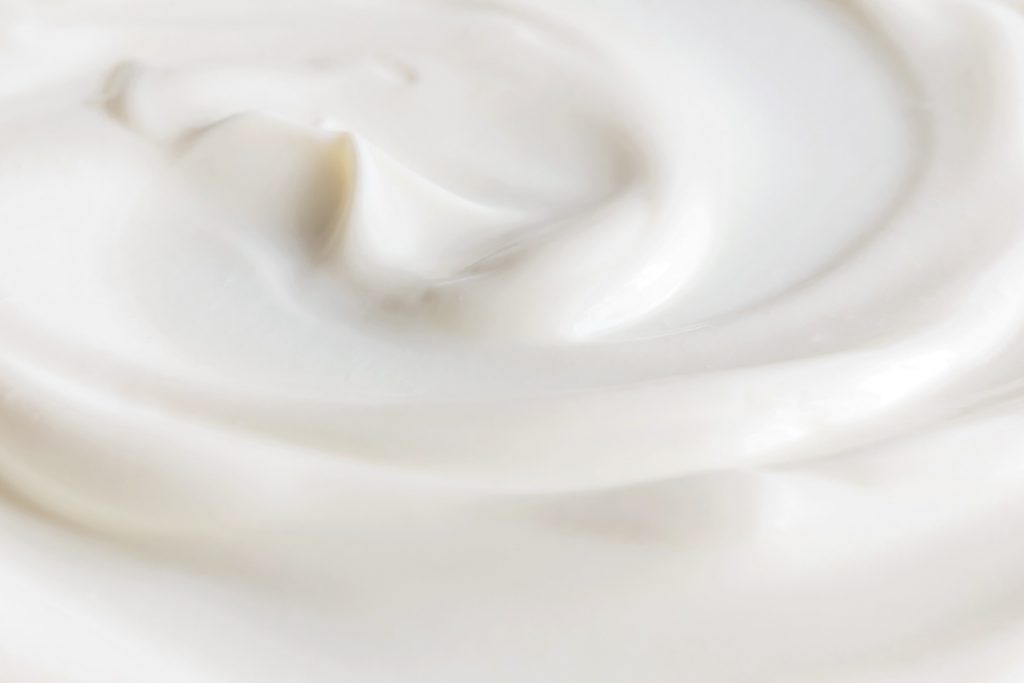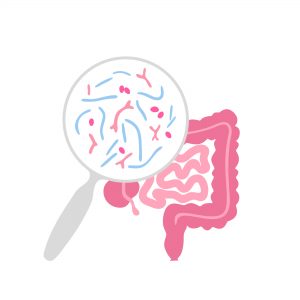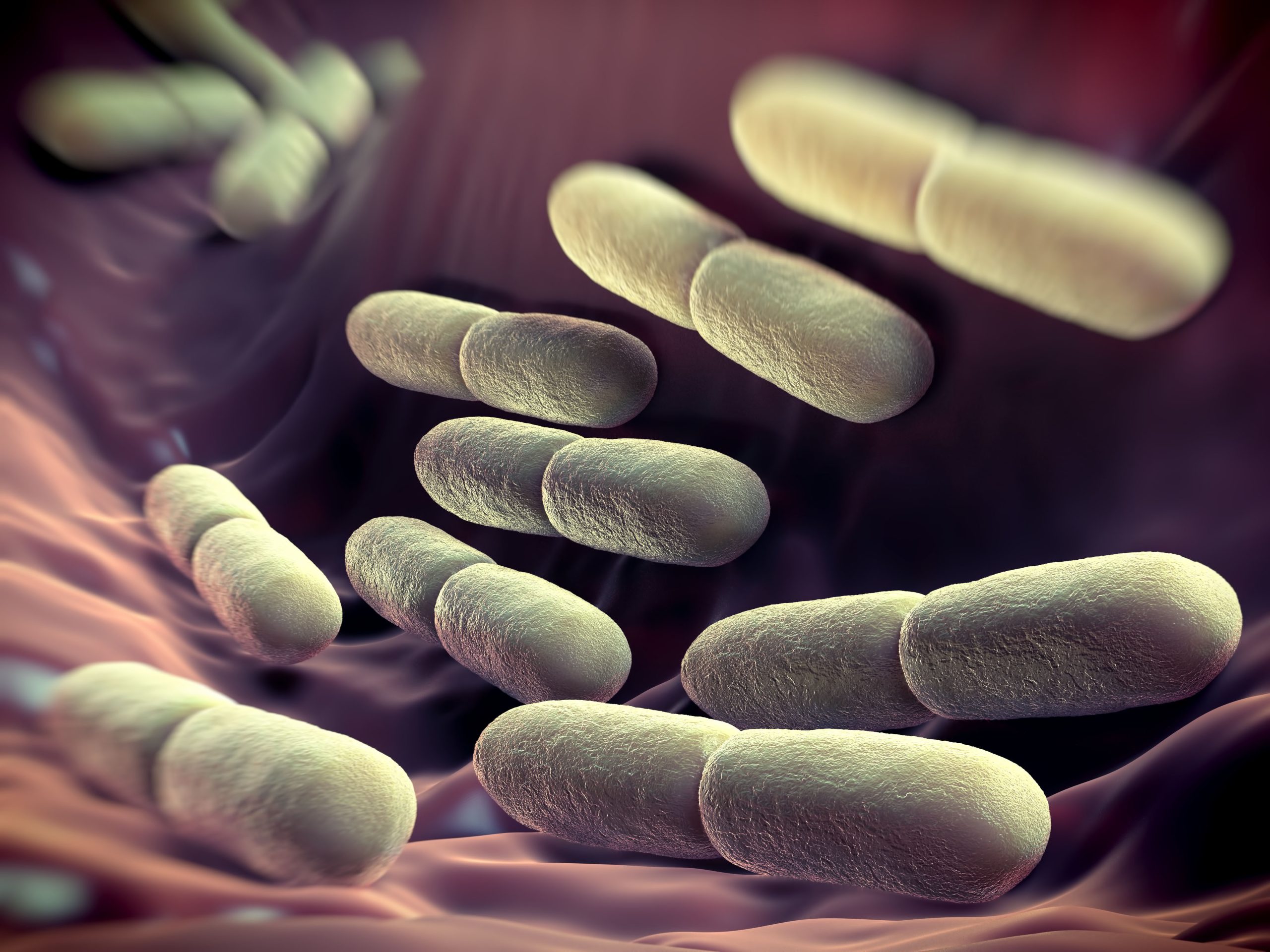Probiotic is a popular term that is increasingly used to describe food products and dietary supplements. But what is a probiotic exactly? And how do probiotics work?
Probiotics are defined by the World Health Organisation as live microorganisms that when applied in sufficient amounts confer a health benefit on the host. The probiotic definition is intentionally broad because it is intended to cover the use of probiotics on different body sites and for different health conditions. Yet, in all applications, the term probiotic should only be used to describe the presence of living microorganisms that have been proven to result in a health benefit. Those microorganisms should be defined at the strain level and have genome sequences which are known.

What do probiotics do?
Human studies have shown that probiotics can be useful for improving and sustaining health in a number of ways. Strong evidence for probiotic use is available for the prevention and management of digestive disorders and infectious and antibiotic-associated diarrhea. Beyond the digestive tract, probiotics may lower the frequency and duration of upper respiratory infections, diminish weight gain and insulin resistance, and reduce feelings of depression and anxiety.
With this broad array of beneficial health outcomes, it is reasonable to ask how this could be possible. How could the exposure to certain microorganisms as probiotics result in benefiting our health in so many ways? The answer to this question lies within our own microbiome. Our bodies are home to trillions of microorganisms that reside on the skin, mouth, digestive tract, and many other body sites. Also known as the human microbiome, these microorganisms are increasingly understood for affecting metabolism as well as our immune and nervous systems. The presence of certain microorganisms in our microbiome are known to be good for us, while others are either associated with or known to cause harm. For example, some beneficial intestinal microorganisms can breakdown fibers that are otherwise non-digestible and convert them into short chain fatty acids that can be used by our colonic tissues for energy and also prime the immune system towards a healthy equilibrium. Other microorganisms that are more associated with harm, produce endotoxin, a compound that causes inflammation. So with this in mind, it may be expected that certain microorganisms consumed or applied as probiotics can have significant effects on our body and that some microorganisms are more suited to be better for us than others. Even though there are far fewer microorganisms in probiotic foods or dietary supplements than the number of microorganisms in our microbiome, probiotics can cause a measurable response and potentially a lasting change at their site of action.
How do probiotics work in the body?
 You might be wondering what happens in your body when you use a probiotic, and how they actually generate a health benefit. Probiotics can improve health through any of several specific mechanisms:
You might be wondering what happens in your body when you use a probiotic, and how they actually generate a health benefit. Probiotics can improve health through any of several specific mechanisms:
-
- Interact with other microorganisms in our microbiome
- Stimulate growth of beneficial bacteria in our microbiome
- Inhibit growth of harmful bacteria in our microbiome
- Interact directly with our body’s organs, such as the intestine
- Produce compounds that reduce inflammation or alleviate leaky gut
- Modulate our immune system
One way some probiotics work is through modulating our microbiome. Probiotics can affect the growth and activity of bacteria in our microbiome to change what they make and do. Studies have shown that these changes are possible even when the probiotic does not colonize for long periods of time. The consequences of probiotic-induced alterations to the human microbiome may be to then change how the microbiome affects organ function. For example, some probiotic strains of Bifiobacterium and Lactobacilus make antimicrobial compounds and organic acids that inhibit, endotoxin containing, potentially harmful bacteria in the intestine. Reductions in the numbers of those harmful bacteria results in reduced inflammation and disruptions to barrier integrity. This mechanism is indirect because probiotic efficacy is dependent on the resident microbiome at that particular body site.
Alternatively, probiotics and the secreted metabolites and other compounds that they make are also directly recognized by immune, endocrine, and epithelial cells. Once recognized, a series of downstream events are activated, such as the reduction of inflammatory responses or alleviation of a leaky gut. Just as for probiotic induced changes to the gut microbiome, these direct effects of probiotics may result in sustained changes at local site where they are applied (for example, the digestive tract) as well as other sites on the body.
Importantly, any single probiotic is not expected to be universally efficacious for all conditions. Microorganisms are genetically diverse and even different strains of the same species can cause a variety of non-overlapping, physiological responses. For example, different strains of the species Lactiplantibacillus plantarum (formerly known as Lactobacillus plantarum) can elicit the production of cytokines over a physiologically-relevant range comparable to ranges observed for different bacterial species and genera.
Probiotics vary in their health benefits and appropriate applications in food and beverages
Although it is currently yet not possible to predict which strains work best, research efforts are underway to understand exactly the specific features of probiotics that are necessary for the observed health outcomes. Whether a probiotic works directly on mucosal tissues or indirectly through modulation of the human microbiome, or some combination of both, knowledge on the molecular mechanisms of probiotic function will ultimately improve the probiotic selection process and guidelines for use. Until then, it is always a good idea to read the label of your probiotic products to find out which species and strains of those species are included.
When using probiotics in foods or beverages, the ability of the microbes you select to withstand different conditions can also be important to consider. Strains like Lactobacillus or Bifidobacterium species typically need to be refrigerated in order to remain alive. These microbes are therefore appropriate for products which will be refrigerated throughout their distribution and shelf life. These species unlikely to survive certain processing conditions like high temperature or acid environments. Endospore-forming strains can withstand a wider range of temperatures and pH ranges because of their hardy spore coat. These strains stay dormant until ideal conditions (e.g. water activity, pH, temperature) are met, similar to a seed for a plant. As a result, it’s important to consider the science, strain characteristics, and application you plan to use a probiotic in when working in foods and beverages.

 Maria Marco, Ph.D. is a Professor in the Department of Food Science and Technology at the University of California, Davis, USA. The goal of Maria’s research is to guide food production to benefit human health. Her research focuses on probiotics in foods, specifically lactic acid bacteria in food systems and the mammalian digestive tract, as well as fermented foods and prebiotics.
Maria Marco, Ph.D. is a Professor in the Department of Food Science and Technology at the University of California, Davis, USA. The goal of Maria’s research is to guide food production to benefit human health. Her research focuses on probiotics in foods, specifically lactic acid bacteria in food systems and the mammalian digestive tract, as well as fermented foods and prebiotics. 

